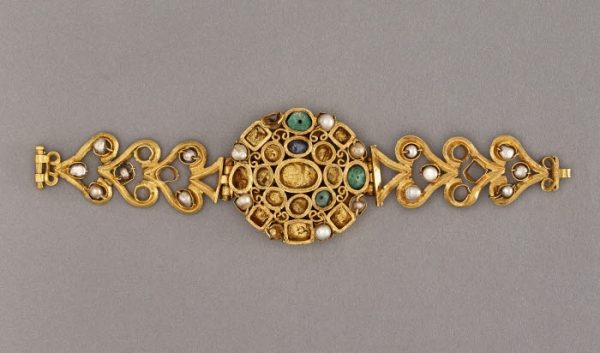



Ring (grave I, 1933, Inv. No. A-2816, archeological collection of the Balneological Museum in Piešťany) weighing 17.48 g is made of gold and in a crown with studded jewelry stones.
The central and largest is a garnet, surrounded by four other faceted transparent jewelry stones (after analysis determined as faceted glass). (see the analysis bellow)
PRSTEŇ Z BOHATÉHO HROBU I Z KRAKOVIAN-STRÁŽÍ (ŠTÝLOVÁ A GEMOLOGICKÁ ANALÝZA) [Ring from the rich Grave from KRAKOVIAN-STRÁŽÍ (Stylistic and gemological analysis)]
VLADIMÍR KRUPA – MIROSLAVA DAŇOVÁ – JÁN ŠTUBŇA – ĽUDMILA ILLÁŠOVÁ1 – JÁN TIRPÁK
https://www.snm.sk/
“Ring from the abundant grave I in Krakovany-Stráže. The discovery and finds of abundant princes’ graves are
of European significance, including two graves from Stráže (today part of the municipality of Krakovany, SK). Part of the finds disappeared shortly after their discovery (Grave I – 1933, Grave II – 1939) and despite huge efforts by experts, none of the missing jewelry was able to be found until 2015. The ring from Grave I, which is analyzed in this article, is exceptional evidence of how Germanic society adopted a new type of jewelry and tried to reproduce it using Roman patterns, but with clear elements of their own. The authors date this step to the first half of the third century A.D. The study includes a gemological analysis of the ring, which identified the individual materials used in the jewel.”

Analysis of the Ring from the Balneological Museum in the context of Jewelry from German Burials in Slovakia; Mirka Daňová https://www.academia.edu
“from the tomb of a young woman in the village of Krakovany-Stráže, which experts date to the end of the third to the beginning of the fourth century AD, was recently acquired by the Balneological Museum in Piešťany. The graves were discovered by clay mining workers in the 1930s. However, some of the jewelry they contained was mysteriously “lost”. Thanks to the initiative of the museum director Vladimír Krupa, the unique gold ring returns to other finds only after many years.”
source (an artlicle with pictures)












